By the time I hit the fourth or fifth swooping, bermed turn, I decided the Gravity Cavity had taken hold of me and I would never come out the other side. I was following Scott, and he pinned each of the first turns. I, on the other hand, was mangling the entries and exits while flipping my head side-to-side like a New York tourist trying to take in all the sights at once. But then it clicked–I found the rhythm and, despite not knowing what was ahead inside the Gravity Cavity, it was as if I could imagine the next turn in my mind. Welcome to Flowconsin.
I traveled to Wisconsin in October in search of a new mountain biking experience apart from the big trails of the west and the familiarity of east coast mountain bike trails. My destination: Cable, a tiny town in northern Wisconsin with primo access to the 300-mile CAMBA (Chequamegon Area Mountain Bike Association) trail system. Despite having only one full day and two half days to spend in Wisconsin, my CAMBA guides and I rode more than 60 miles of the best singletrack in the system, starting with one of the newest trails: Seeley Pass trail, which includes the Gravity Cavity.

On the drive out to the trailhead, I chatted with Don, who works at New Moon Ski and Bike in Hayward, about what to expect from the CAMBA trails. It turns out CAMBA celebrated its 20th anniversary this year and since 1993, the eponymous trail system has grown organically through various builds and connections. Don remarked how each trail builder over the years had left their unique imprint on the look and feel of the trails. The section we would be riding today was recently constructed under the direction of one of the architects of the famed Copper Harbor trails just a few hours away in Michigan, so I knew we would be in for a fast, flowy ride.
We had a great group for this ride, including Jeff and his whip-fast high-school-aged daughters Keeley and Kyra. Wisconsin claims to have America’s largest state mountain bike race series, and both girls are top riders in the high school division. With NICA high school mountain bike leagues sweeping across the country, Wisconsin is in the unusual position of already having an active and established MTB race series for teenagers that’s not part of NICA.
Don and I pulled up to the small, freshly cleared parking area which barely fit the four vehicles in our group. I pulled the Specialized Epic S-works I would be riding off the truck (Don’s personal rig) and marveled at how clean the bike looked and how light it felt. Once everyone was geared up, we rolled onto a gravel road called Camp 38 road. After less than half a mile, we made a left turn onto the sculpted and bermed Seeley Pass trail.
The Seeley Pass trail is a new linkage that connects the Cable and Seeley Clusters of the CAMBA trails with the popular OO Trailhead to the south. The members of CAMBA are working to create one of the largest cross-country mountain bike trail systems in the country, and clearly northern Wisconsin is a great spot to do it.
CAMBA
The Chequamegon (pronounced “schwamagin,” and standing for the C in CAMBA) National Forest covers 1.5 million acres in northern Wisconsin, an area that was virtually flattened by logging companies in the early 1900s. Today, most of the CAMBA trails are located on National Forest and Bayfield County-owned land.

With a county population of only 1,400 year-round residents, it’s surprising to find such an active mountain bike club that’s able to build and maintain hundreds of miles of first-class mountain bike trails. The club does count about 250 members, though many don’t actually live in the area. I spoke with CAMBA Executive Director Ron Bergin about how the trail system was able to evolve with such a small, albeit fanatical, group of volunteers.
Back in the early 1990s, “people [were] accustomed to coming here for the big ski events, big bike events [which really set] the stage [for building more trails]. The chamber of commerce actually played a big role. […] [T]hey pulled together the trail people to talk about trails. It wasn’t even necessarily mountain bike trails–just trails in general–but it quickly evolved into a discussion about what to do and it’s sorta how CAMBA got started. We need some trails, we need to organize these things, how are we going to go about it?”
With a vision to build trails that would draw not only event-based tourism but also more steady visitors, the CAMBA folks have always been more than willing to share their trails with weekend warriors, many of whom come from out of state. They’re truly proud of what they’ve built and enjoy seeing others ride the amazing singletrack.
CAMBA is “building this because they love it and they want everyone else to be able to share it,” says James Bolen, Executive Director of the Cable, WI Chamber of Commerce. “And so it’s not like this [trail] is mine, I don’t want you [to ride here]. They like seeing people out there on the trails using them and experiencing them. [Out of town riders] get that sense, so they feel like this is almost their home trail.”
The club does eventually see an end to the current trail building boom, but no one is ready to put a firm date on it yet. Trail densities are slowly creeping up, and with so many miles of existing singletrack, it’s rare to see more than a few riders on any given Saturday ride. Still, the desire to build more–and improve existing routes–clearly burns bright at CAMBA.
The newest CAMBA trails: Seeley Pass and the Gravity Cavity

After a few miles of fast, flow-style riding, we hit the famed Gravity Cavity, a trail that dips in and out of a small ravine seemingly dozens of times before rejoining the main trail. I’m told it’s not uncommon for riders to loop the Gravity Cavity over and over again because they can’t get enough–and it’s easy to understand why.
The weather was perfect for our ride, and the changing leaves were on full display with endless shades of yellow and orange. I was particularly struck by the clusters of aspen trees, which I naively assumed were only found in the Rockies. Tall, thick evergreens dotted the forest, lending an alpine feel to this otherwise rolling terrain. There aren’t many opportunities for long range views in this part of Wisconsin, but to me, just taking in the beautiful forest and secluded lake views was more than enough.



After about 11 miles of riding we popped out at the OO trailhead, which sports two massive parking lots and a spigot with drinking water for refilling bottles. Even out here in the open it was clear the light was fading fast, and we needed to start heading back. On the return it seemed like the pace was even faster. We took a couple gravel road shortcuts and were back at the truck before dark, the air much cooler than when we started. This was a big “after work” ride for me, but I couldn’t wait to get out the next day to explore even more!
Rock Lake Epic Loop
After Monday’s fast 18-mile ride I was feeling a little anxious about riding the roughly 30-mile Rock Lake epic loop. Looking at a map which showed trail ratings, this ride promised to be much more challenging.

The Rock Lake loop is officially an IMBA Epic route that strings together some of the most technical trails in the system, while leading riders around scenic, remote lakes and through dense hardwood forests. This loop is popular with riders thanks to its Epic status and is a great choice if you only have time for a single ride. However, this isn’t a good ride for beginners, as it does include advanced and expert rated sections.
I rolled up to the Rock Lake trailhead with Scott, Jack, and David at around 9am, dodging the lone brown sawhorse that was trying its best to close off the parking lot due to the federal government shutdown. The air was crisp and cool but the sun seemed to ignite the yellow leaves above us; after just a few minutes of riding I would be stashing my arm warmers. I had forgotten my gloves back at the cabin and by the end of the ride the inside of my thumb would be rubbed raw–but I would still finish with a huge smile on my face.

Scott was easily the fastest rider in our group and since he had ridden the loop many times before, he led off the front–and promptly took us down the wrong trail. It’s an easy mistake to make with multiple trails crossing near the trailhead, and fortunately Scott recognized the error and got us back on the right track. We would stay on the advanced-rated Rock Lake Trail for the first few miles of our ride.
The Rock Lake Trail is what many mountain bikers consider “old school” since it was laid out in the days before machine cuts–and even before mountain bikes themselves. We rattled over the narrow, rocky trail while still maintaining our momentum through the dips and climbs. The great thing about mountain biking in northern Wisconsin is you never have to climb very long before coasting down the next descent.
The CAMBA trails are built in an area that was shaped by glaciers millions of years ago. As the glaciers retreated, they left behind layers of crushed rock, rolling hills, and kettles–basically huge divots in the ground–many of which are now filled with crystal clear lake water.

At the 4.5-mile mark, we reached the Hildebrand Lake loop, which is one of the few double black diamond-rated (expert) trails in the decidedly cross-country system. The trails were challenging to be sure, with larger rocks, steeper climbs, and narrower tread than what we had ridden until that point. This was easily my favorite part of the entire Rock Lake Epic in part because of the challenge, but also thanks to the beautiful scenery. At this point the forest marches right up to the shoreline of three tiny lakes, and I caught brief glimpses of each through the trees. I felt like an explorer, the first human to discover these virtually inaccessible bodies of water.
The Hildebrand Lake loop itself was only 2.5 miles, and we quickly regained the Rock Lake Trail for a bit before turning right onto a beginner-friendly trail called the Glacier Trail. Next we turned right onto the Patsy Lake Trail, following the helpful “Epic” signs tacked to posts at various intersections. Even with the signs, I’m glad we had a map–and a guide–to help keep us on track!
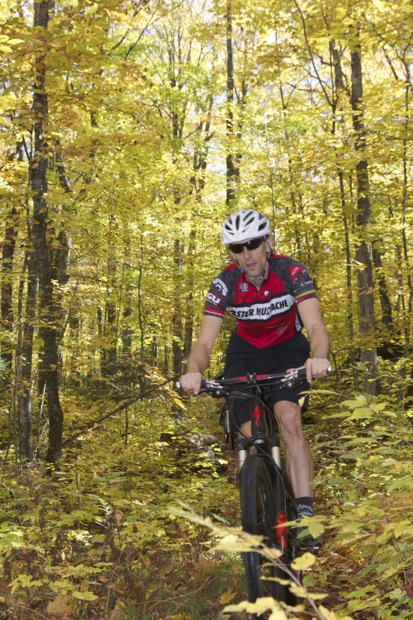
The group was running a bit behind schedule thanks to my insistence on taking pictures every five minutes, so we decided to skip the Patsy Lake trail extension that would have taken us by the Wilson Lake Trailhead. James, my host for the trip, would be meeting us at the Namakagon Town Hall trailhead soon with a delicious picnic lunch.
From Patsy Lake, the epic route sticks to beginner and intermediate-rated trails, including the Namakagon Trail which was fast and, dare I say it again, flowy. We made great time and rolled into the Namakagon Town Hall parking lot where there was a sunny picnic table for us to enjoy our gourmet sandwiches from the Ideal Market.
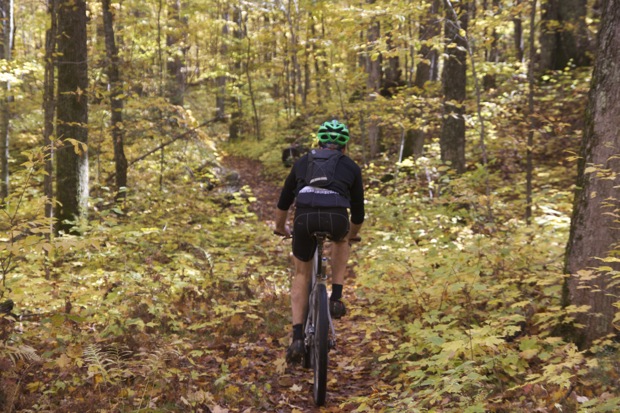
By this point we had ridden 17.5 miles, but we still had another 7.5 miles of advanced to expert-rated trail to ride. Admittedly, I was tired and didn’t have much of an appetite but I knew I needed all the fuel I could stomach to finish strong. Scott had to get back to work soon, so we were back on the trail quickly and powered up the initial climb out of the parking lot.
By the end of the Namakagon Trail I was feeling much better and the energy from our lunch was starting to kick in. We tackled the back side of the Rock Lake Trail with gusto, and I was proud to have cleaned the entire stretch, including Volkswagen Rock. At the crossing with Rock Lake Road, we stopped to chat about the trails with a middle-aged woman who had recently started mountain biking.
I knew we were getting near the end of our ride so like a horse on its way back to the barn, I picked up the pace to see if I could leave Jack and David behind. I pushed my legs until they felt like rocks, concentrating on pinning every turn and floating over every rock garden in sight. The last stretch was challenging and fun and before I knew it, we were back in the parking lot. This was definitely one of those rides that starts and ends strong, and it left me wanting more.

I drove back to my cabin at Lake Owen resort and popped open a New Glarus Spotted Cow cream ale, a beer that’s only available in Wisconsin and easily my new favorite micro-brew. Beer in hand, looking out at the fall colors reflecting off the lake, this was the perfect way to end the day.
Aprés bike
Driving country road M between Cable and Namakagon in the darkness on the first night of my trip, I imagined this must be what it’s like to travel in Alaska. Seemingly endless stretches of soulless, blackened highway were punctuated every few miles with a lone streetlight over a tiny diner parking lot. I was startled when a group of deer appeared in my headlights, frozen in the middle of the road as my rental car came to a quick halt.
Although remote, Cable is an excellent vacation destination located only about 4 hours from Minneapolis and less than 2 hours from Duluth, MN. Many of the weekend mountain bikers you’ll find on the CAMBA trails are actually from the Twin Cities, drawn to the excellent singletrack and the beauty of lake country. During my visit in October, much of the tourist flow was restricted to the weekends for the apple festivals and leaf-strewn Sunday drive, leaving the trails virtually empty during the week.

Outside of the town of Hayward to the south, you won’t find a single fast food restaurant or even a stoplight in CAMBA country. That’s ok: the restaurants you will find are great local spots with plenty of character. In Cable, the Rivers Eatery is a popular pizza and beer spot with a unique “pay it forward” chalkboard painted on the wall behind the bar. Anyone can buy a beer or pizza for a friend to pick up the next time they stop in. For example, one entry was from a rider who wanted to thank the (unknown) guy who helped him fix a mechanical out on the trail. Another patron even bought a beer for Gary Fisher, and I remarked that someone needed to tell Gary because I was sure he would come up to claim his drink. As it turned out, he already had–and there was a photo on the bar to prove it.
Beyond burgers and beer there are several great restaurants serving fresh, local ingredients, including the Rookery where I tried the Walleye with an amazing mango salsa. The Brick House is a great spot for grabbing coffee, and I saw a steady stream of customers there while enjoying my chorizo breakfast burrito one morning.
There are a number of cabins and small inns located along the shores of the many lakes in the Cable area. I stayed in a cabin at Lake Owen resort, which is a great spot for a family vacation, or even a group of guys who want to ride hard all day and relax on the lake in the evening. Lakewoods Resort in Namakagon offers various accommodations, plus a restaurant and car-free access to the Rock Lake epic trailhead.
Unfortunately this was going to be a short trip for me–I would have to catch a flight back to Atlanta the next day after riding the Makwa and Hatchery Creek trails in the morning. But I had already decided I would be back again.
The Seeley and Hayward Clusters
We got an early start Wednesday morning for our point-to-point ride, starting at the OO trailhead and heading down to Hatchery Creek. The OO is one of the more popular trailheads, and with its proximity to the town of Hayward, this section of trail is well-traveled.

I ate a big pile of french toast at the Sawmill in Seeley, filled up my water bottle from the pitcher on the table, and threw on some arm warmers before driving to the trailhead just a couple miles away. There were 10 of us on this ride, including Jack and David from the Rock Lake ride the day before. Our mission for the day was to ride the Makwa Trail to the Mosquito Brook trailhead and complete the Hatchery Creek trail loop, which would return us to Mosquito Brook.
Racing in CAMBA country
Jack is the lead organizer for a new local race called the Mt. Borah Epic, a 30-mile, mostly singletrack, point-to-point race that covers much of the trail we would be riding that day. The May race is a great fundraiser for CAMBA and is an excellent bookend to the Chequamegon Fat Tire Festival held in September each year.
The Chequamegon Fat Tire Festival draws mountain bikers from throughout the midwest and well beyond. As part of the festival, more than 2,000 mountain bikers line up on Main street in Hayward for a mass start at the Chequamegon 40, while another 1,000 riders ride the Short & Fat race starting in Cable; both races finish at the Telemark Resort near Cable. The race sells out quickly every year and is easily one of the largest mass-start mountain bike races in the country.
This part of Wisconsin is also well known for its cross-country ski heritage, which is a huge part of the “silent sports” lifestyle the locals enjoy. With fat bikes gaining in popularity, many mountain bikers are extending their season, and in 2012 the first annual Fat Bike Birkie race drew 300 fat bike riders–unofficially the largest fat bike race in the world. The course utilizes the normally closed-to-bikes Birkie cross-country ski trail, and this year the field has been expanded to 500 riders.
Fat bike ground zero

Alaska may stake a legitimate claim to the birthplace of fat biking, but it turns out a lot of fat bike developments are taking place right here in Wisconsin. For those who remember this video, it was shot on the Birkie trail smack dab in the middle of the CAMBA trail system (or the other way around, depending on who you ask). There are a still a lot of unknowns when it comes to things like fat bike trail design and etiquette, and the folks in northern Wisconsin are on the bleeding edge. I asked Ron Bergin, executive director of CAMBA and longtime cross country skier, about the relationship between skiers and fat bike riders.

“Right now I don’t think the skiing organizations are quite ready to embrace [fat biking] in terms of the interplay between skiers and bikers. Not […] because of the damage or anything, it’s the unknowns. In our trail guide we’ve flagged a few trails that we think are appropriate for fat bikes because they double as snow shoe trails and they’re going to get packed down. So far we don’t know about the interplay between snow shoers and mountain bikers, but we’ll see how that plays out.”
It’s an interesting question to consider; up until now, skiers and snow shoers have had winter trails to themselves. And whereas cross country skiers are moving at speeds on par with fat bikes, snow shoers and bikers can have a significant speed differential. Not to mention all three groups have different ideas about ideal snow pack conditions.
“[CAMBA is working to identify] trails that might be suitable [for] deliberate grooming and packing.” Ron mentioned various methods for grooming fat bike trails–including dragging equipment with snowmobiles or even specially-designed two-wheel drive motorcycles.
“[An industry group is] looking for a venue to hold a mini conference primarily focused around [fat bike trail] grooming, and they want to do it here. Because we have the snow and we have some trails. So I think there will be a lot more information as far as best practices forthcoming.”
It seems fat biking is already starting to grow up, and its teenage years are being spent in Wisconsin.
Riding the Makwa and Hatchery Creek trails

Jack suggested I take the lead on this ride, and I was a little reluctant since I didn’t know the trail. Like the Seeley Pass trail, the Makwa crosses the Birkie Trail seemingly dozens of times, but fortunately each crossing is well-signed and easy to navigate.
With no one riding out front, I decided to put the pedal down to see what kind of excitement I could drum up from the trail. The Makwa is a solidly intermediate trail and there aren’t any big descents, which meant I needed to hammer the pedals to keep my speed up. And hammer I did, though I do have to give a lot of credit to the Epic S-works that was under me. I was pinning turns, airing off the bumps, and brushing past trees at speeds I hadn’t reached all summer.

I eventually worked up enough of a gap to stop and take some photos of the group as they rode through, soaking up the sun from the bluebird fall skies overhead. The weather in northern Wisconsin can be hit or miss this time of year, but this was definitely a hit!
We continued on the Makwa trail, which alternated from smooth to fairly rocky, for several miles until we reached the Mosquito Brook trailhead. From here we joined the directional Hatchery Creek trail, which is basically a 9-mile loop around the Birkie trail. The aspens along this stretch were golden and out in full force. I kept reminding myself that I wasn’t riding in the foothills of Colorado, despite the fact that the scenery looked so familiar. The drop down to the Hatchery Creek trailhead was fast with good flow, and was one of my favorite sections during the trip.

I refilled my water bottle at the Hatchery Creek trailhead and we began what I assumed would be a fairly steady climb back up to Mosquito Brook. I worked up to a steady pace and kept waiting for the climb… which never came. Before I knew it, we had covered another 4.5 miles and were back at the trailhead where we would end our ride. Technically we ended the ride almost 300 feet lower than where we started at OO, but it felt like a whole lot more.

After the ride, James picked up David and I for lunch at the Angry Minnow brew pub in Hayward. The brewery is best known for its River Pig American Ale, and I can vouch for its deliciousness, particularly after an 18-mile ride. I ordered the Tear Jerker burger with fried red chiles, pepper jack cheese, chipotle spread, and what appeared to be a layer of Sriracha on the bottom bun. I was so hungry I quickly wolfed down my burger, spice and all, somehow avoiding shedding a single tear.

The only tears I did shed on this trip were on my drive back to the Duluth airport. It wouldn’t be long before leaves, and eventually snow, would cover the CAMBA trails, rendering the singletrack mostly unrideable until after the spring thaw. But that’s part of what makes trails like this so special–there’s such a fleeting window of opportunity it’s almost impossible to take the excellent riding for granted. I can’t wait to get back for another shot.










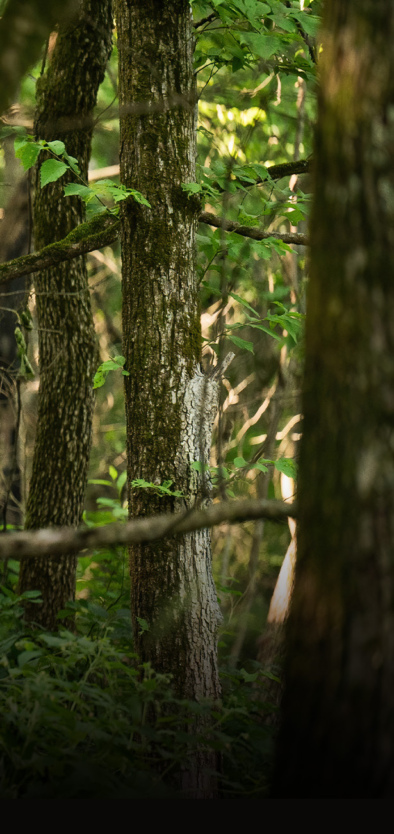

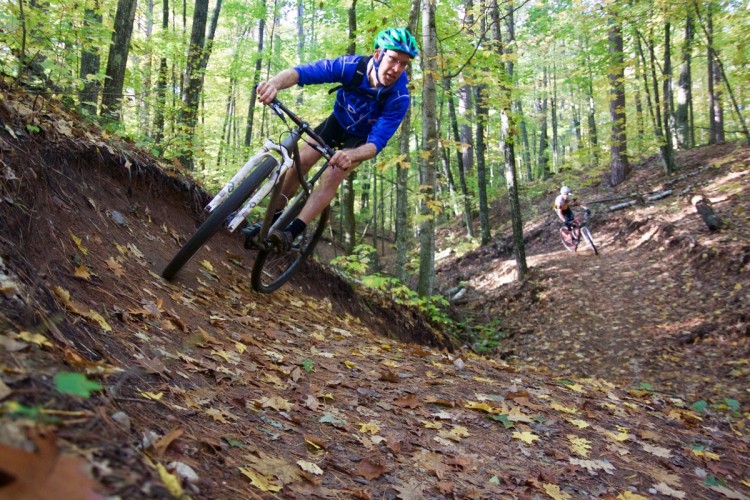



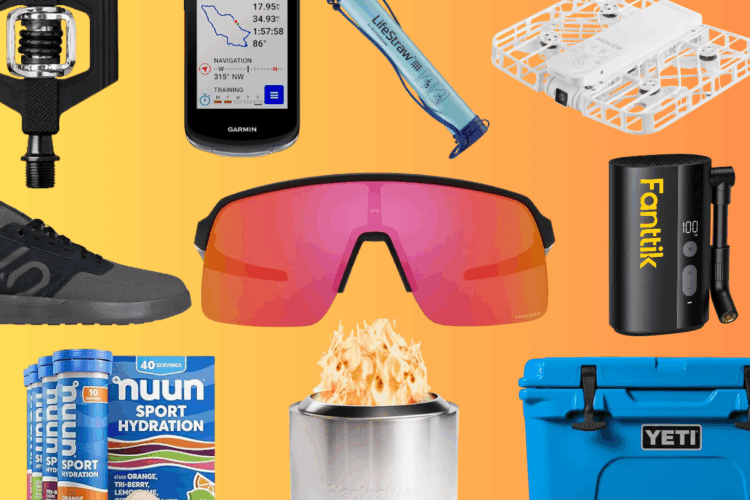
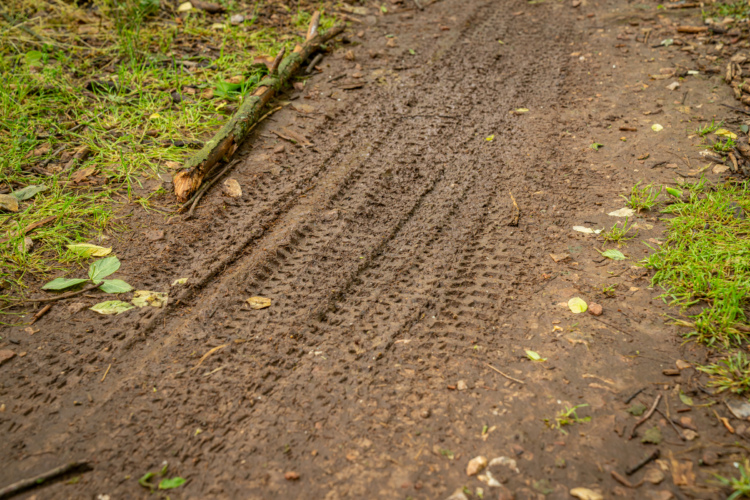
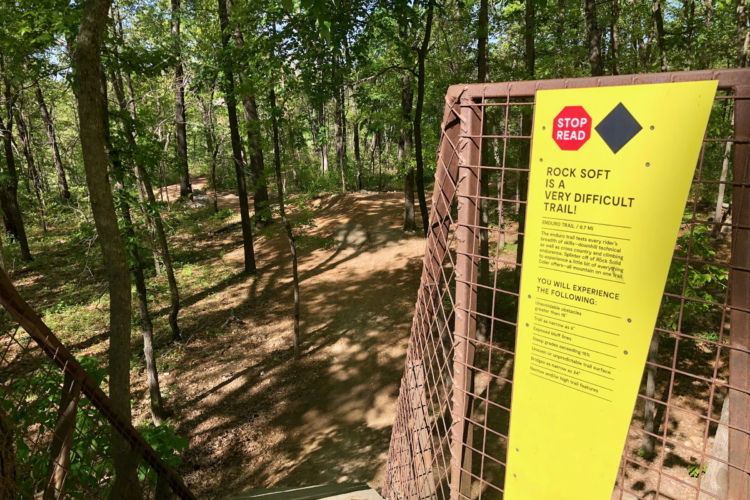
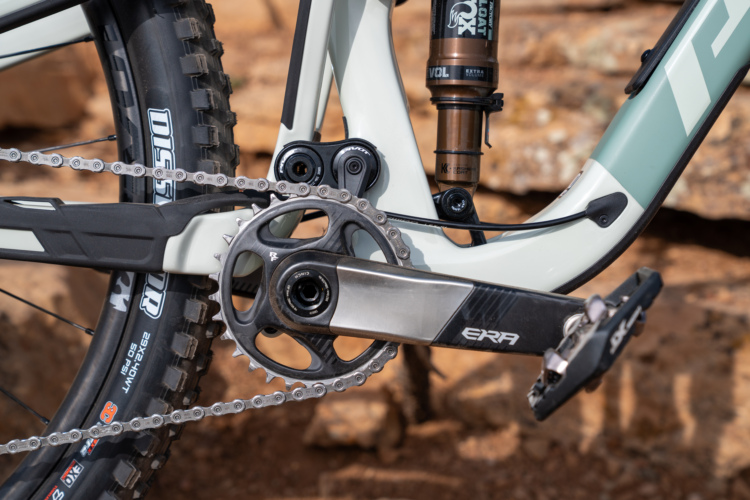

13 Comments
Nov 12, 2013
:D :D :D :D :D
Nov 12, 2013
Turns out it's a karma thing--if we all work to make our local trails excellent, everyone can enjoy great trails everywhere. Guilt free. :)
Nov 12, 2013
I love it when out-of-towners hit trails I've labored to build or maintain. It'd actually be pretty sad if it was just me and my local peeps--not a good return on our labor investment.
Nov 12, 2013
Nov 16, 2013
http://www.pedegoelectricbikes.com/pedego-trail-tracker/
Nov 14, 2013
Nov 15, 2013
Jul 10, 2018
Nov 12, 2013
Nov 14, 2013
http://www.nordicskiracer.com/news.asp?NewsID=15205
http://www.xcskiresorts.com/hot-topics.php
What seems odd is the prohibition on bikes due to safety reasons: that a biker might collide with a skier. This is, of course, based on the so-called "speed differential" which is often cited as justification for keeping regular mountain bikes off singletrack -- "they go too fast and are an inherent danger to hikers." It only makes sense that anti-bike advocates break out the same argument in winter. So what's odd? In some areas, fat bikes have been banned from groomed snowmobile trails due to the speed differential--even though bikes are the slow ones in that equation! First we're too fast, now we're too slow. Unfortunately, we must often deal with opposition that simply has more clout even if they don't have fairness, facts, or rational thought on their side.
As far as the pay-to-play operations go, that's a business decision that's entirely up to them, but as far as public lands go, that should be open to all who can quietly, safely, and sustainably enjoy the land.
Nov 14, 2013
Nov 14, 2013
Nov 13, 2013
Rock Lake is the one loop I have done in this area, and it was great!
Also, a huge +1 to New Glarus brewing. Spotted Cow is delicious, and they have tons of other fantastic beers, for sale ONLY in Wisconsin, as well. Whenever I go home for a visit, I hit up the liquor store for either a sampler pack or a couple of six packs of New Glarus :)